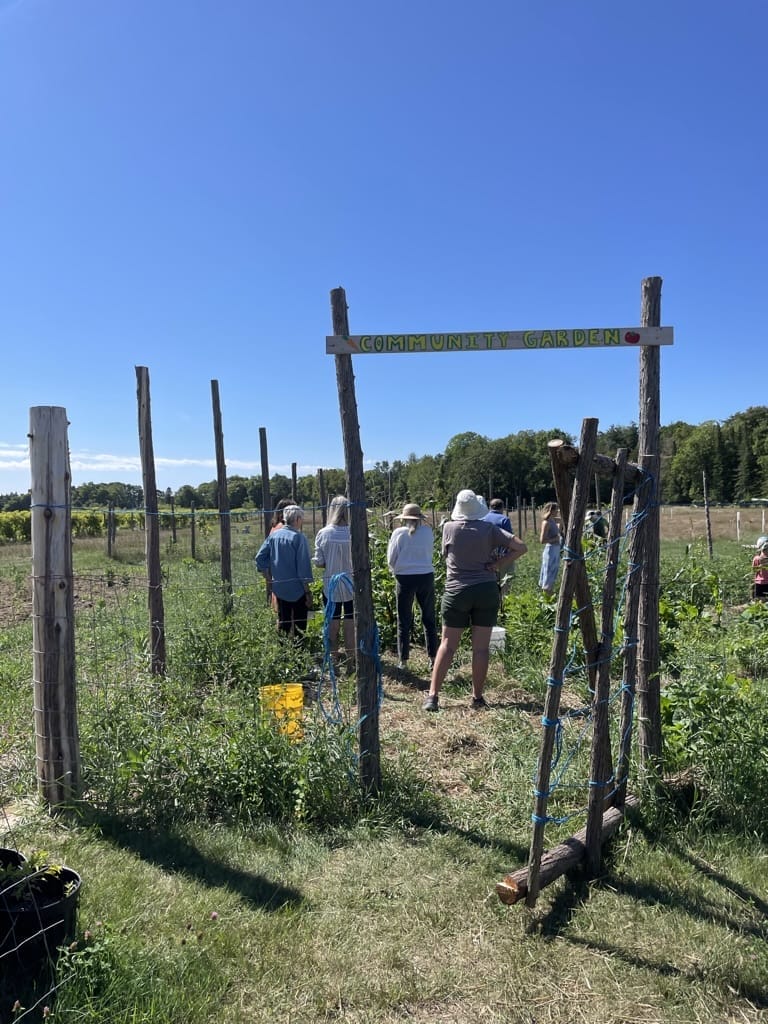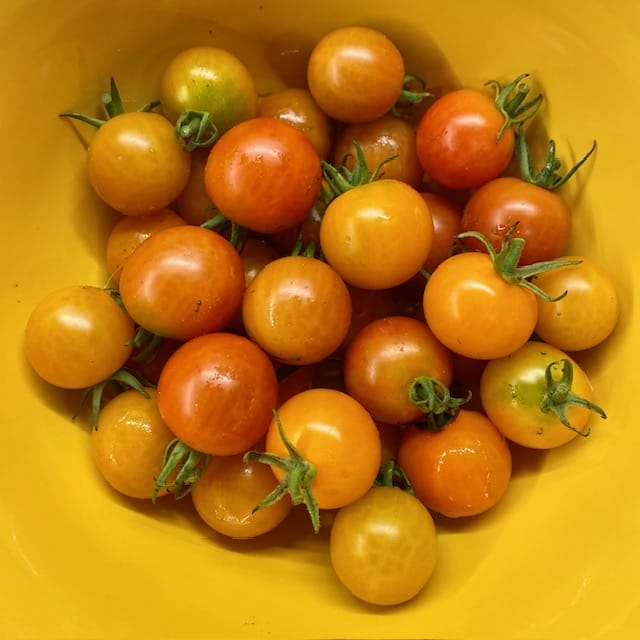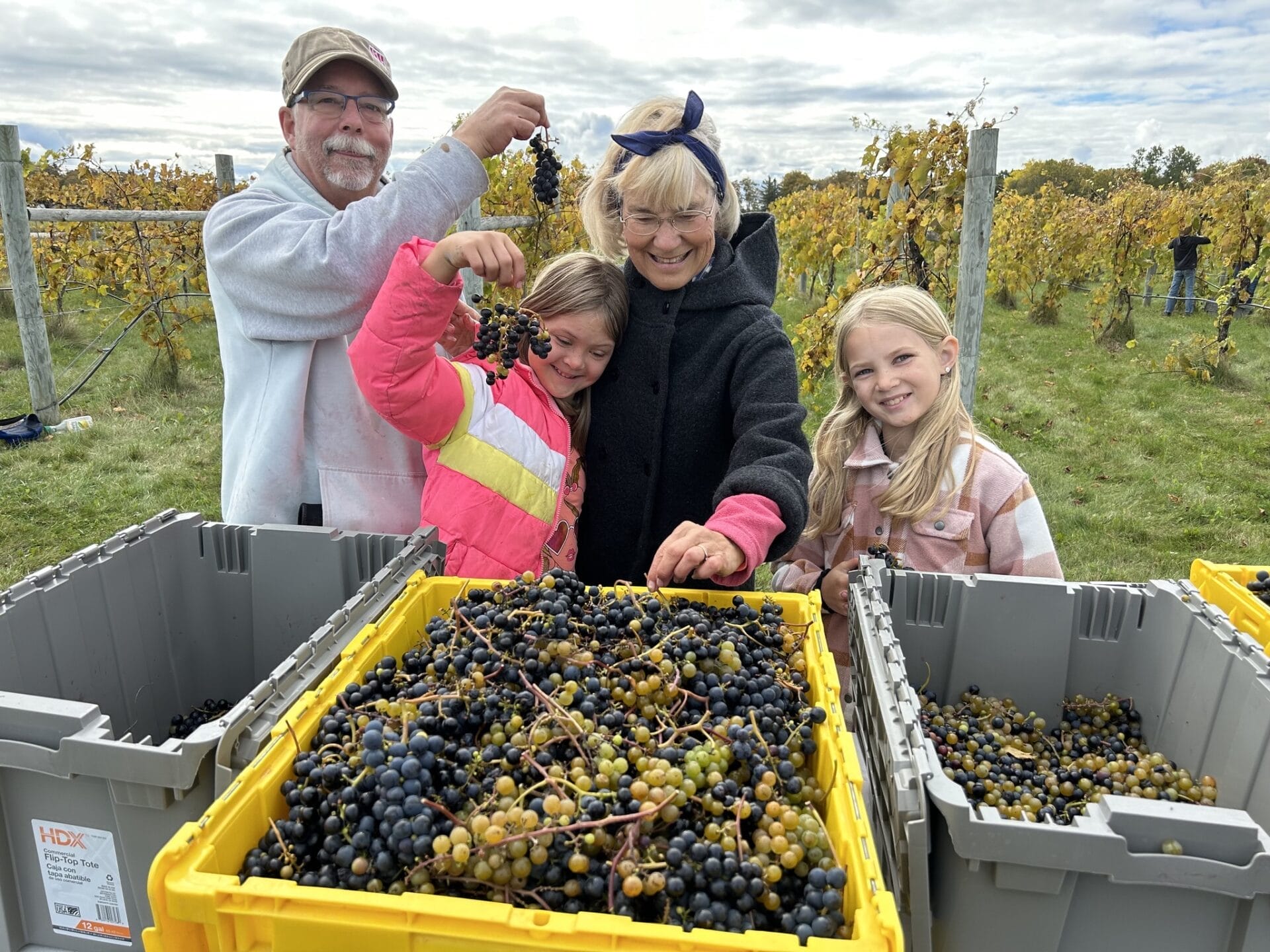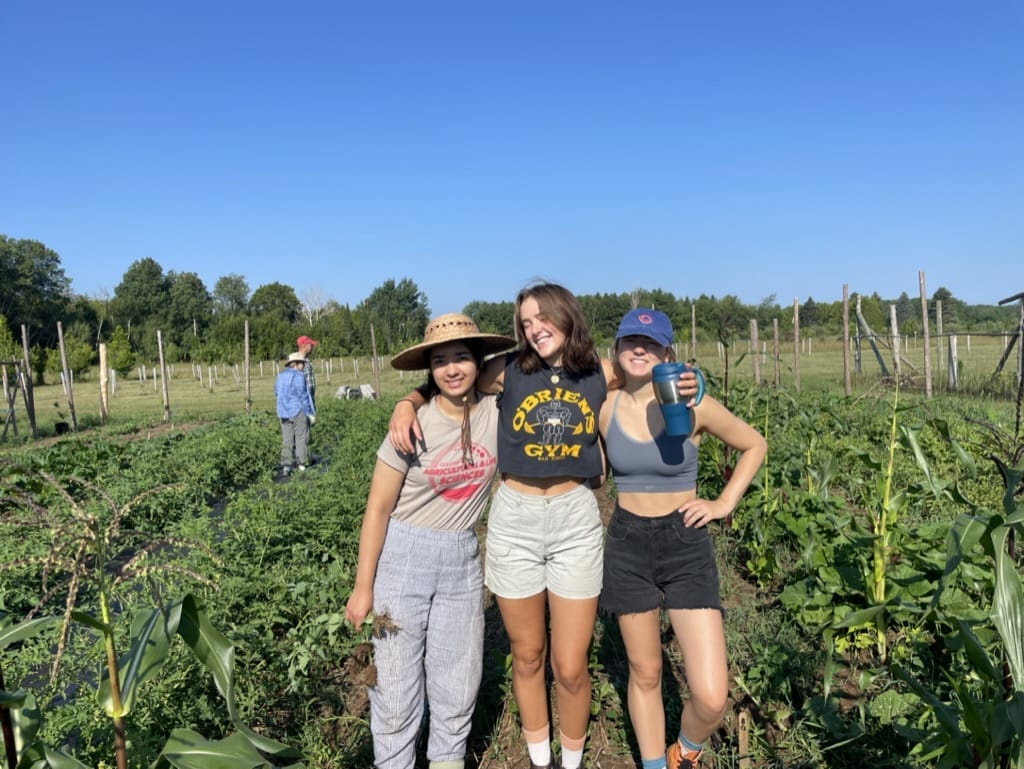
Planting for the Future Campaign
When you plant a tree, you build soil, create habitat and feed people.
This year Gathering Ground purchased a 40-acre farm on Aznoe Road, expanding the possibilities of how we fulfill our mission. As we embrace these opportunities, our Planting for the Future fundraising campaign will help us bring life and community to our two farms. We’re raising $1.1 million over the next 5 years, and we need your help. Keep reading to learn why.
Planting For The Future Starts Now
At Gathering Ground, we bring people together through farming and food. We believe connecting to the land and understanding where food comes from changes lives and inspires action. We are dedicated to preserving Washington Island’s farming heritage while building a vibrant local food system. This year, through the vision and generosity of a few key community members, we purchased the 40-acre farm on Aznoe Road, expanding the possibilities of how we fulfill our mission.
As a 501(c)3 nonprofit, Gathering Ground’s $1.1 million Planting for the Future campaign will help us embrace these new possibilities on our two farms, 74 acres, in four key ways:
- expand our practice and promotion of sustainable farming
- expand our educational programs like Ground School
- grow more healthy food and make it accessible to more people
- increase our outreach through more workshops and classes
Why This Matters
Industrial Food Has Created Problems That Are Global & Complex
Soil Loss
Since farmers began tilling in the Midwest in the 1860’s, 57.6 billion metric tons of topsoil have eroded. Around the world, soil loss is also a severe problem.
Restoring the soil of degraded land, can be an important weapon in the fight against the climate crisis. We need healthy soil to grow food, manage waterways, and maintain habitat.
Nutrition theft
The quality of the industrial food has diminished drastically. With emphasis on quantity and calories over quality, veggies from the store have less nutrients than they did 50 years ago. Between 1975 and 1997, the average vegetables lost significant nutrients.
Most food is highly processed, making it harder to eat healthfully.
Fragile food chain
The average distance your food travels from farm to plate in the U.S. is 1,500 miles.
This leaves a massive carbon footprint, raises prices for consumers and leads to loss of freshness and nutrients. Not to mention, as we discovered during COVID-19, this system can break down quickly.
Local food systems are more resilient.
Who Will Grow Our Food?
The average age of farmers in the U.S. is 58 .1 and this is trending up quickly.
With the high startup costs and barriers to accessing farm land, it’s hard for younger people to get started in farming.
The USDA considers beginning farmers anyone who has farmed for 10 years or less. Learning how to farm takes time, experience, and mentors.
Get all the facts and learn more about these problems on our resources page.
Gathering Ground's Solutions Are Local & Practical.
Farm
Farm in a way that nurtures the land and builds healthy soil for generations to come. Support local farmers as we do so
Educate
Help research, share knowledge and get more people involved in growing food through internships, workshops and classes
Localize food
Ensure fresh, nutrient-dense food is available in our community through farmers markets, food pantries and partnerships
Spread The Word
Get more people involved in the local food web through cooking classes, shared meals, book clubs and community-building activities

Planting for the Future Campaign
Help us reach our goal of $1.1 million over the next 5 years.
Your contribution will support these four areas of growth.
Get Involved
We invite you to help us realize this vision. Join a committee and be part of something meaningful.
Join our farm & land use committee
Shape the future of sustainable farming practices and land stewardship at Gathering Ground. Email Alessandra.
Help with education & community outreach
Help develop programs that educate and connect our community to sustainable living. Email Alessandra.
The best time to plant a tree was 25 years ago. The second best time is now.
Help us reach our $1.1M campaign goal so we can help prepare our community for the future.

 Donate
Donate









